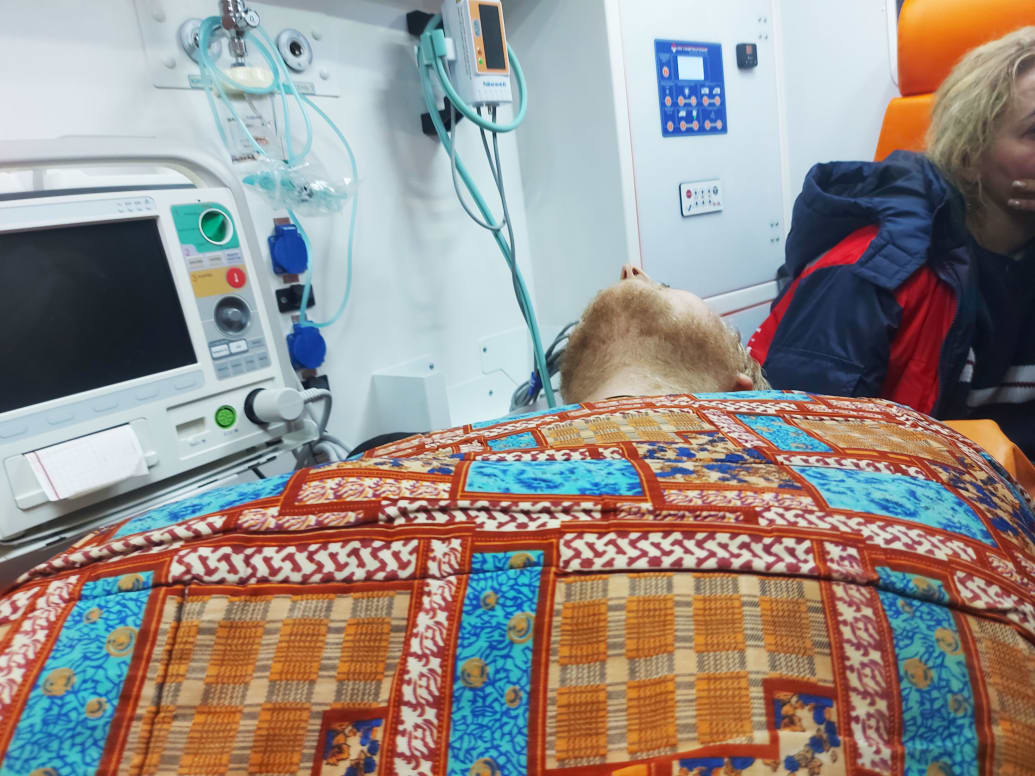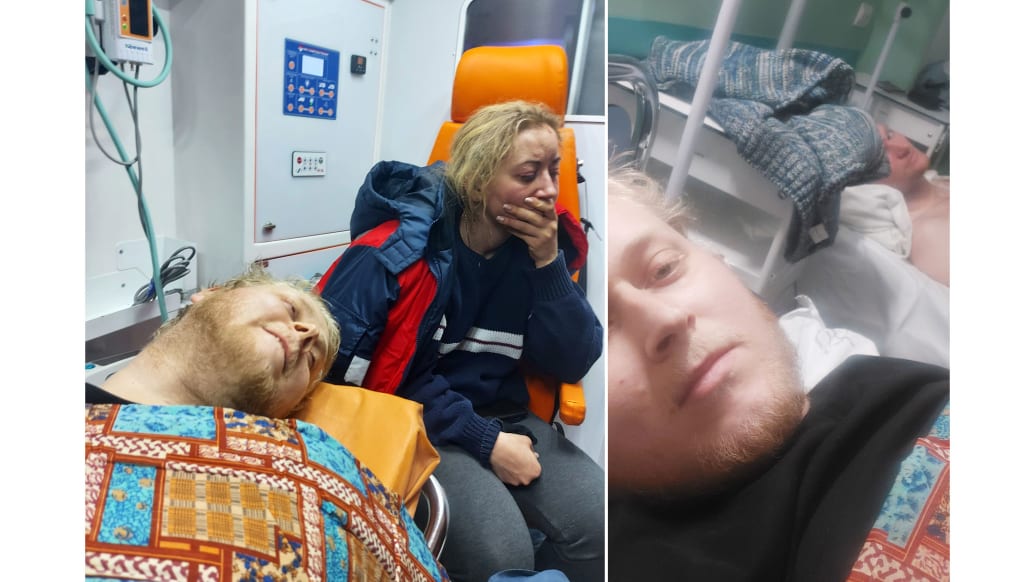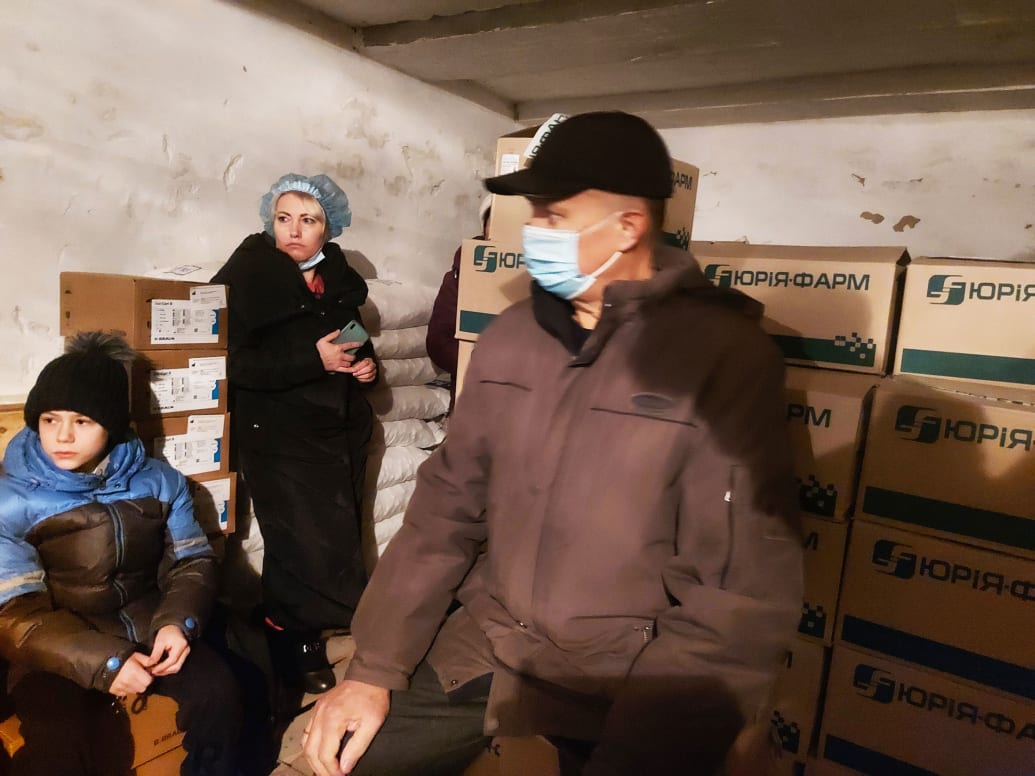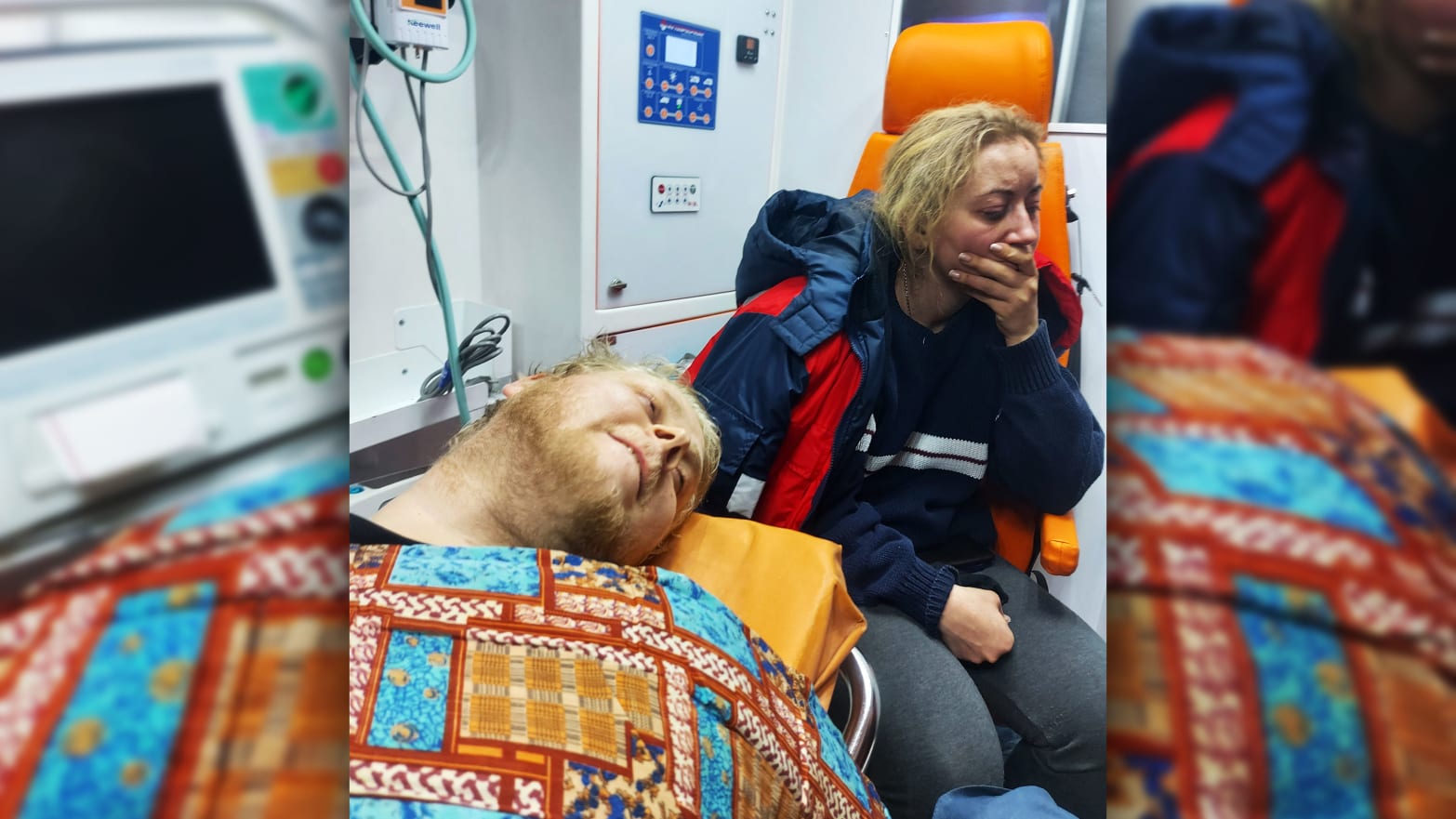OKHTYRKA, Ukraine—It was quiet near the front lines in the city of Okhtyrka before the artillery attack. My colleague, photographer Emil Filtenborg, and I had arrived in the afternoon to report from a kindergarten that had been bombed by the Russian army the previous day, leaving several children wounded. Despite the terror of that incident, Feb. 26 had so far been more peaceful, at least enough for residents to be out walking in the streets.
I was walking back to fetch our car after talking to Ukrainian soldiers at a checkpoint when, suddenly, a deafening blast shook the ground. A Russian artillery shell had struck nearby.
Immediately, I ran towards Emil, who was standing near the car waiting for me. We jumped in and drove a few hundred meters before stopping briefly to decide on the safest exit route out of the city.
While we were stopped, another car approached us from behind. A man carrying what looked like an assault rifle emerged from the vehicle. He then opened fire without any warning.
We had the letters “TV” taped on the back of the car to indicate that we were press, but that didn’t stop the shooter from emptying his rounds of ammunition into our car. The first shot broke through the rear window glass, narrowly missing our ears. After that, several more rounds. At least two bullets flew so close past my head that I could feel the wind pressure on my ears.
Before I knew it, Emil had taken one shot to each leg and two in the back. I had taken one to the shoulder. The bulletproof vests we were wearing couldn’t shield us from the many bullets that perforated our car, which was smoking from the gearbox and hood.
We drove as fast as we could to escape. The shooter seemed to keep firing at us for as long as our car was in his line of vision.
Emil was bleeding heavily from his right leg, where a bullet had struck above his knee. He pushed his fingers into the wounds to make it stop. I was trying to keep the car moving as fast as possible in case the man who attacked us was intent on finishing the job.

Photographer Emil Filtenborg lying down in an ambulance out of Okhtyrka.
Handout
“Can you check my head? I think I am bleeding out of my head,” I told Emil as blood ran down my forehead and towards my eyes. He checked and pulled a small piece of glass out of my forehead. I was relieved.
With the shock of the initial gunshots wearing off, Emil, who at first thought only his legs had been hit, began to feel the pain of the wounds in his back.
“How bad are you bleeding from your back?” I asked him. Emil wiped his left hand on his trousers and then touched his back. It came back bloody. “It’s not so bad,” he responded.
We had to stop. Emil was losing too much blood. The car was draining liquid and we didn’t know if it was safe to keep driving in it.
A whirlwind of thoughts raced through my head before we halted the car. Who was the attacker? Why did he shoot at our car, despite the press label? Would he try to catch up with us?
I thought about whether Emil was dying. I also thought, “Am I dying?” For some reason, I could hardly feel the gunshot wound in my left shoulder. Perhaps it would be a peaceful death, I wondered. Without pain.
When we stopped the car, I asked Emil to lay down on a nearby patch of grass in the outskirts of Okhtyrka. A military car quickly approached us, and two Ukrainian soldiers stepped out of the vehicle to offer help. But before they had a chance to provide first aid to Emil, four other soldiers arrived with their assault rifles aimed at us. They wanted to know who we were.
I explained to them that we were journalists who were hit in the center of the city. They seemed confused and asked where exactly, trying to find out whether there was fighting in the streets of Okhtyrka and whether they should call it in.
As we spoke, another Russian artillery piece struck nearby. We took cover to the ground.
Afterwards, the soldiers were allowed to administer first aid to Emil. He was taken to the back of a car and driven to the local hospital. I soon followed with another Ukrainian soldier.

Handout
The hospital floors were splattered with blood when we arrived. Emil was rushed to the surgery room and staff tended to my wounds. Around me, nurses were cursing, mothers were crying, and several badly burned patients were being triaged. All I could do was watch.
News came quickly that Emil was in stable condition despite his many wounds. We were told that no one knew what had happened in the center of town that day. There were some reports that Russian saboteurs had been active near the front lines of Okhtyrka, but it was impossible to know for sure who was behind the attack on us.
Not long after, we realized that blatant attacks on journalists reporting in Ukraine were on the rise, including a Russian assault on a Sky News TV crew who were shot at on Friday despite clearly identifying themselves as reporters. Another journalist, Ukrainian camera operator Yevhenii Sakun, was killed in an attack on a TV tower in Kyiv that same week.

Sirens were often heard in the city of Poltava due to Russian airstrikes.
Handout
Arranging an evacuation from Okhtyrka was not easy but eventually, late that night, a military ambulance transported us to the Ukrainian city of Poltava, further away from the front lines. From there, a security company hired by the Danish newspaper Ekstra Bladet helped get us back home to Denmark, where we are currently undergoing medical treatment.
We’ll never forget that ride to Poltava. There were six Ukrainian soldiers traveling with us, including Anastasia and Dmitri, a married couple who had left their 6-year-old son at home with their grandparents to go and fight.
“We are fighting for a free Ukraine. We are fighting for our freedom,” Dmitri, who was burnt on the right side of his head, told us in the ambulance. “It’s worth putting your life on the line for.”

